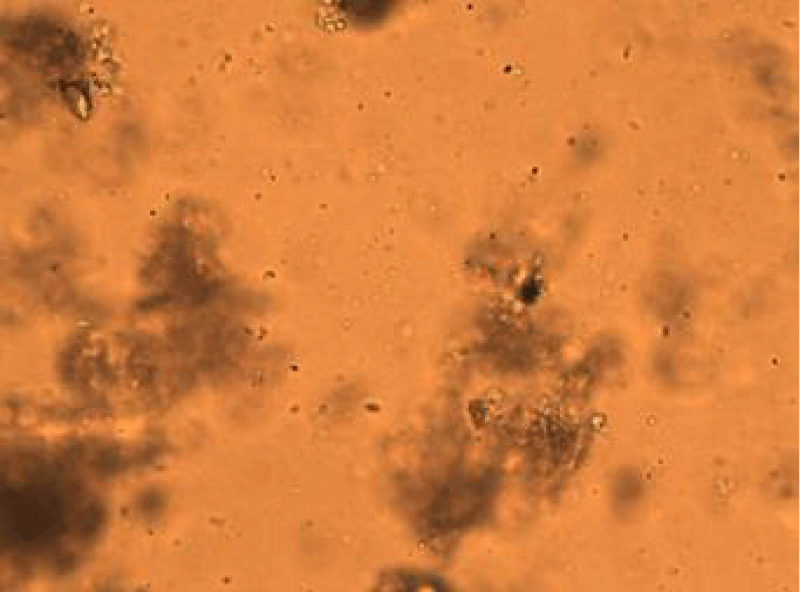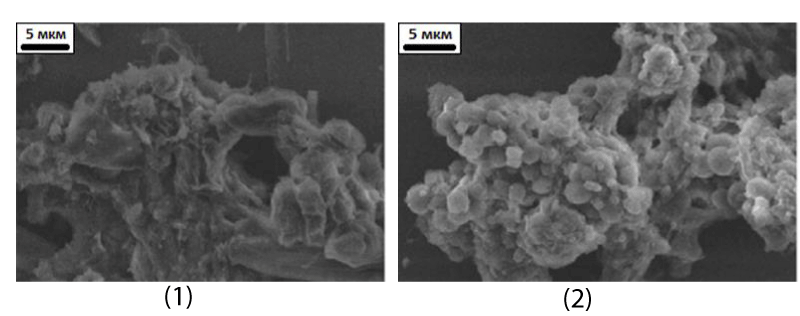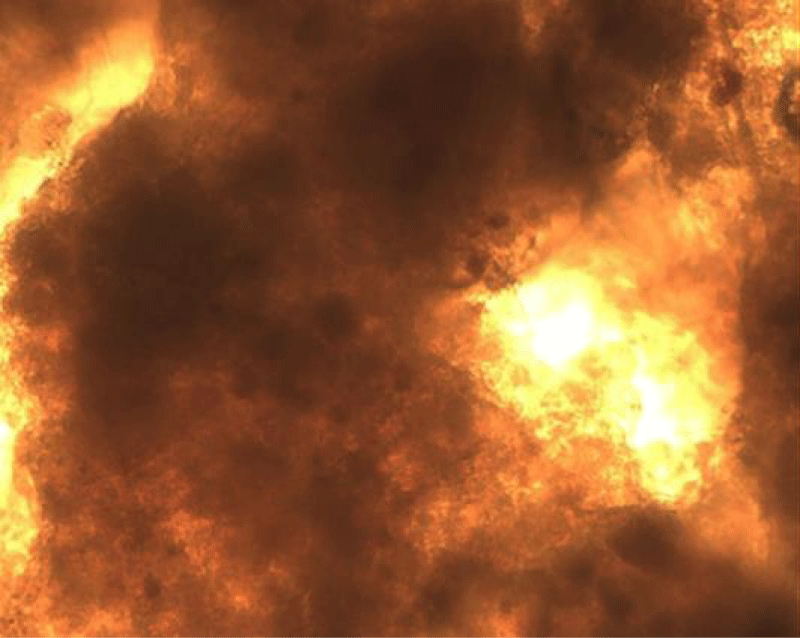Annals of Environmental Science and Toxicology
Prospects for environmentally safe disinfection of urban sewerage with the help of compositions of non-toxic bactericidal metal complex reagents and surfactants
Tsivadze AYu1, Fridman AYa1*, Barinov RA1, Kruglina KA1,2 and Magomedrasul G2
2EcoBioTech, Moscow, Russia
Cite this as
AYu T, AYa F, Barinov RA, Kruglina KA, Magomedrasul G (2023) Prospects for environmentally safe disinfection of urban sewerage with the help of compositions of non-toxic bactericidal metal complex reagents and surfactants. Ann Environ Sci Toxicol 7(1): 001-003. DOI: 10.17352/aest.000063Copyright
© 2023 AYu T, et al. This is an open-access article distributed under the terms of the Creative Commons Attribution License, which permits unrestricted use, distribution, and reproduction in any medium, provided the original author and source are credited.The prospects of environmentally safe disinfection of urban sewerage using compositions of bactericidal complexes of copper with amino acids and iminodiacetate derivatives of mucopolysaccharides and triglycerides of fatty acids are shown. When they are dosed into wastewater, the complexes penetrate into the structure of Suspended Particulate Matter (SPM) and mucus and within a few minutes bind the structural fragments of pathogens and larvae, which leads to their death with the outflow of cell fluid, the disappearance of fecal odor, cessation of putrification and coagulation of SPM. The complete disinfection is achieved at doses of complexes of 0.8 - 1.5 mmol per 1 kg of dry matter. The composition is dosed into sewage wells. Organo-mineral masses settle from disinfected wastewater. The use of compositions will reduce the negative impact of sewerage on the sanitary-epidemiological and ecological situation in settlements, increase the efficiency of existing treatment facilities and produce organo-mineral masses as commercial products.
Introduction
Household and fecal wastewater are discharged from residential and public buildings, trade, food, and other enterprises into the city sewer, through which they enter the treatment plant. Wastewater contains particles including fecal residues, foodstuffs, cellulose and hemicellulose materials, soap, clay, silicates, and other substances. Pathogenic microorganisms actively develop in them. As a result of their vital activity, wastewater has a sharp fecal and putrefactive odor, they prevent the sedimentation of suspended particles, and the walls of sewer systems are covered with mucus. For these reasons, sewerage has a negative effect on the overall environmental and sanitary-epidemiological situation in settlements [1-3]. In this aspect, the disinfection and neutralization of wastewater before they enter the treatment plant is an urgent problem. Until now, it remains practically unresolved. City sewerage is an underground complex engineering system, including sewer wells into which sewage flows, pumping, channels, and pipelines, as well as ventilation. Currently, it is proposed to disinfect wastewater using chlorine-containing disinfectants, by aeration, ozonation, UV irradiation, or photochemical decomposition of water [4-8]. However, the use of these methods requires capital expenditures. In our opinion, the best option for its solution is the disinfection of wastewater by dosing reagent bactericidal reagents into wastewater in sewer wells. In this case, a low-hazard mass that does not have an unpleasant odor will move in the channels and pipelines. However, such reagents are not described in the literature. When approaching their development proceeded from the following considerations. In [1,9], compositions of bactericidal copper amino acid complexes and bactericidal detergent in the form of compounds of copper ammoniates with polycomplexons such as iminodiacetate derivatives of monosaccharides and triglycerides of fatty acids are described. The first one is used for the disinfection of sludge from sewage treatment plants with their transformation into non-toxic organo-mineral masses, and the second one is used for disinfection and washing off fatty contaminants. The action of the complexes as bactericides is based on the binding of amino carboxylic groups of proteins (HY) according to the reactions: CuL(NH3) + HY = (NH4)[CuLY] and CuImda(NH3) + HY = (NH4)[CuImdaY], where L is an amino acid anion and Imda is an iminodiacetate group in polycomplexones. When the Y-proteins of the cell membrane bind, the microorganisms lose their ability to consume food, the respiration of the microorganism slows down and stops, the protoplasm flows out of the cell and the microorganism dies. Pathogens consume dissolved oxygen and exhale carbon dioxide and pungent-smelling volatiles, including skatole. At a dose corresponding to the disappearance of a specific odor, as a rule, E-collie \u003d 0. It could be expected that under the action of these reagents on wastewater, disinfection will occur, decay and the release of volatile substances with a fecal odor will stop, and the surface of the vessels will be washed from fatty deposits and mucus. In addition, it seemed appropriate to include surfactants in the composition of the detoxifying composition, in particular, iminodiacetate derivatives of polysaccharides, which are capable of binding petroleum products and synthetic detergents into soluble complexes [10-12]. The latter hinders the interaction of metal complexes with pathogen shells.
The purpose of this work is to develop a composition of copper amino acid complexes, compounds of copper ammoniates with iminodiacetate derivatives of mucosaccharides and triglycerides of fatty acids with the addition of iminodiacetate derivatives of polysaccharides, then a reagent, and determine its prospects for its use for disinfecting wastewater and mucous deposits of urban sewerage, with the release of non-toxic organomineral masses.
Experimental and results
Initial components: Composition of ammonia-amino acid complexes of copper, trade name composition MMT-BD (U), production of RusEcoTech LLC, Russia.
Composition of copper ammine with iminodiacetate derivatives of mucopolysaccharides and triglycerides of fatty acids. The trade name is “Logiam Ts” production LLC “RusEcoTech”, Russia.
Composition of iminodiacetate derivatives of polysaccharides. The trade name “Polycomplexones”, production of LLC “RusEcoTech”, Russia.
The reagent was prepared by dissolving 20 g of Logiam-C and 4 g of Polycomplexones in 100 ml of the MMT-BD(y) composition in mass fractions of 1:4. A 10% solution was used for the study.
Research methods. Preparative, chemical analysis, optical microscopy, bacteriological analysis by phase-contrast microscopy and cultures on blood medium and Endo medium, determination of the mass content of SPM by ultracentrifugation, determination of the proportion of settled particles by sedimentation analysis, determination of the effectiveness of fat deposits and mucus washing off by FITR, determination of acute toxicity of SPM in disinfected liquid by probit analysis on laboratory rats.
The studies were carried out on the wastewater from the urban sewerage of the cities of Moscow and Voronezh regions (Russian Federation) and the city of Dubai (UAE). Samples of concrete blocks were placed in straight chambers and kept in a passing liquid for 10 days, then samples of a cloudy grey liquid with a sharp fecal odor in the amount of 5 liters were taken. The surfaces of the samples were covered with a layer of mucus. Figure 1 shows a micrograph of a drop of the sampled liquid.
Small particles of 0.5 – 1.5 microns in size and separate particles of 20-30 microns in size are visible in the drop dispersed in the yellow liquid. Figure 2 shows photographs of SPM from a sample in ordinary and polarized light. It is known that pathogens are transparent in ordinary light, and their colonies glow in polarized light.
From the micrograph in ordinary light, it can be seen that the particle consists of agglomerates of fibrous structures with cavities inside. The average size of agglomerates is 35 µm – 60 µm and the size of cavities is 10 µm - 20 µm. A micrograph of the same particle in polarized light shows that its surface and cavities are covered with bacterial colonies. Bacteriological composition: capsid viruses, E. coli, streptococcus, micrococci, diplococci, staphylococcus, enterococcus, Entamoeba coli, salmonella, trichomonas, trichomoniasis, plasmodium (rare), vibrio (rare), brucella, because spores, yeast, helminth eggs (pinworm, roundworm), larvae of subcutaneous tick and synanthropic flies. The total number of microbial bodies is from 4*106 to - 2*1011. The content of SPM in wastewater discharged from residential buildings and public catering establishments, manufacturing, and trade in food products is from 0.25% to 0.5% in terms of dry matter. The composition of the particles: fats and soaps from 12% to 17%, proteins from 20% to 28%, cellulose, hemicellulose, polysaccharides from 32% to 36% and mineral components from 22% to 40%.
The content of petroleum products, synthetic surfactants, and residues of cosmetics and perfumes is from 0.8% to 1.9%, the humidity is from 96% to 98.5%. The mass of mucus and fatty deposits on washed concrete samples is from 0.332 g/cm2 to 0.646 g/cm2 and on metal samples from 308 g/cm2 to 590 g/cm2.
The solution of the composition was dosed drop by drop into the liquid with the samples until the beginning of mass sedimentation. It was found that within 3-6 minutes after the start of the process, the characteristic odor disappeared, and the value of E-coli became zero. After 40-60 minutes, the liquid became transparent. The mass of the settled particles ranged from 0.28% to 0.54% and humidity from 96% to 98.5%. The mass of mucus and fat deposits on washed concrete samples ranged from 0.002 g/cm2 to 0.006 g/cm2, there was practically no contamination on metal samples.
The increase in the mass of settled particles can be explained by the washing of mucus and fat deposits. Particle composition: fats and soaps from 12.2% to 17.3%, proteins from 21% to 28.5%, cellulose, hemicellulose, polysaccharides from 32% - 36%, mineral components from 22% to 40%. Petroleum products and synthetic surfactants were practically absent, and the residues of cosmetics and perfumes ranged from 0.08% to 0.21%. Figure 3 shows a micrograph of the settled particle.
It can be seen that the deposited particle is an agglomerate with a size of 100 microns or more, consisting of clumped small particles, in the center of which inclusions of mineral particles are visible, surrounded by fibers, probably cellulose and hemicellulose. The settled organo-mineral mass with oral supplementation is practically non-toxic and has an LD (50) in the range of 15 g/kg - 20 g/kg. The aqueous phase after the separation of the organomineral mass is a clear, odorless liquid. No pathogens were found in it.
Results and discussion
Currently, wastewater through water removal systems from the sewerage enters the wastewater treatment facilities, wherein the primary sedimentation tanks there is a separation into a biologically hazardous water fraction and sediment with a sharp fecal odor.
- Tsivadze AYu, Fridman AYa. Wasteless Processing of Renewable Protein and Carbohydrate – Containing Waste into Consumer Good. Handbook of Eco Materials. 2018; 1 - 33. DOI: 10.1007/978-3-319-48281-1_123-1
- Numberger D, Ganzert L, Zoccarato L, Mühldorfer K, Sauer S, Grossart HP, Greenwood AD. Characterization of bacterial communities in wastewater with enhanced taxonomic resolution by full-length 16S rRNA sequencing. Sci Rep. 2019 Jul 4;9(1):9673. doi: 10.1038/s41598-019-46015-z. PMID: 31273307; PMCID: PMC6609626.
- Kim Y, Farnazo DM. Toxicity characteristics of sewage treatment effluents and potential contribution of micropollutant residuals. Journal of Ecology and Environment. 2017; 41. DOI: 10.1186/s41610-017-0057-9
- Wang Y, Zhang X, Zhang D, Fu G, Dong X, Zeng S. The structure design of integrated urban drainage systems: A view of robust optimization. J Environ Manage. 2022 Nov 15;322:116050. doi: 10.1016/j.jenvman.2022.116050. Epub 2022 Aug 31. PMID: 36057180.
- Kim YK, Yoo K, Kim MS, Han I, Lee M, Kang BR, Lee TK, Park J. The capacity of wastewater treatment plants drives bacterial community structure and its assembly. Sci Rep. 2019 Oct 15;9(1):14809. doi: 10.1038/s41598-019-50952-0. PMID: 31616020; PMCID: PMC6794251.
- Ai S, Dong S, Nie Z. Study on Aeration Optimization and Sewage Treatment Efficiency of a Novel Micro-Pressure Swirl Reactor (MPSR). Water. 2020; 12(3): 890.
- Pei M, Zhang B, He Y, Su J, Gin K, Lev O, Shen G, Hu S. State of the art of tertiary treatment technologies for controlling antibiotic resistance in wastewater treatment plants. Environ Int. 2019 Oct;131:105026. doi: 10.1016/j.envint.2019.105026. Epub 2019 Jul 24. PMID: 31351383.
- Pochwat K, Kida M, Ziembowicz S, Koszelnik P. Odors in Sewerage – A Description of Emissions and of Technical Abatement Measures. Environments. 2019; 6: 89. DOI:10.3390/environments6080089
- Ju CA. Metal-complex bactericides with detergent properties. Reports of the Russian Academy of Science. Chemistry, Material Science. 2020; 494: 5–8.
- Tsivadze AYu, Fridman AYa, Maksimov AL, Polyakova IYa, Gorbunov AM, Petrukhina NN, Shabanov MP. A Detergent Prepared from Iminodiacetate Derivatives of Fats and Polymucosaccharides from Base Hydrolyzates of Protein-Containing Waste . Russian Journal of Applied Chemistry. 2020; 93: 333-339.
- Tsivadze AYU, Fridman AYA, Tumanyan BP, Maksimov AL, Novikov AK, Polyakova IYa, Gorbunov AM, Petrukhina NN, Shabanov ML. Peculiarities of Dispersion of Oil Raw Materials into Aqueous Solutions of Polycomplexones Surfactants Chemistry and Technology of Fuels and Oils. Springer (VAN GODEWIJCKSTRAAT 30, DORDRECHT, NETHERLANDS, 3311GZ). 2020; 56: 124-128.
- Tsivadze AYu, Maksimov AL, Fridman AYa, Tumanyan BP, Novikov AK, Gorbunov AM, Shabanov MP, Kuchinskaya NS, Burykhina ES. Processing of Oil-Tank Sludge by Hydrothermal Dispersion using polycomplexants and Amino-Acid-Salts. Chemistry and Technology of Fuels and Oils. Springer (VAN GODEWIJCKSTRAAT 30, DORDRECHT, NETHERLANDS, 3311GZ). 56: 199-204.
Article Alerts
Subscribe to our articles alerts and stay tuned.
 This work is licensed under a Creative Commons Attribution 4.0 International License.
This work is licensed under a Creative Commons Attribution 4.0 International License.





 Save to Mendeley
Save to Mendeley
